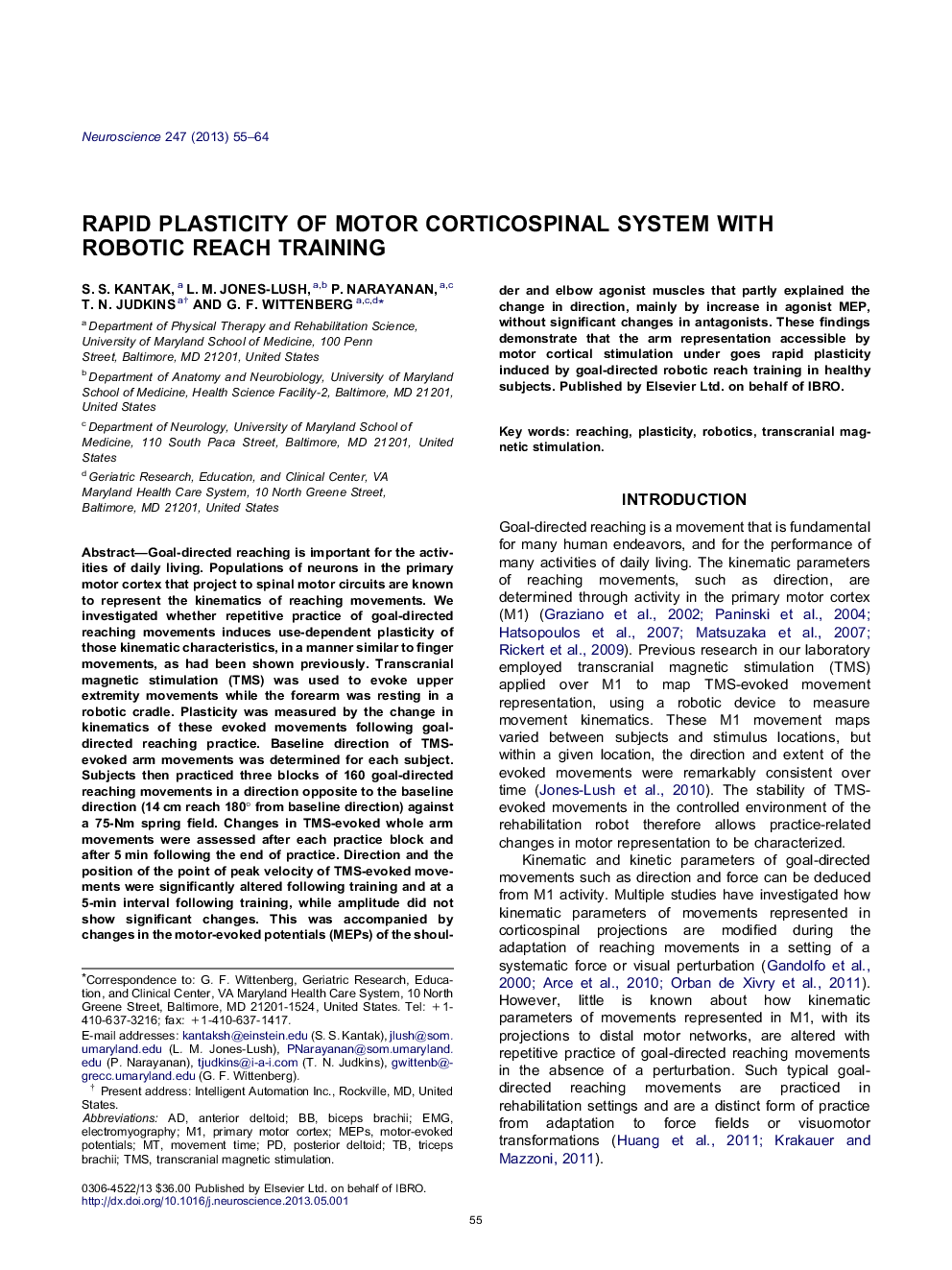| کد مقاله | کد نشریه | سال انتشار | مقاله انگلیسی | نسخه تمام متن |
|---|---|---|---|---|
| 6274800 | 1614829 | 2013 | 10 صفحه PDF | دانلود رایگان |
- TMS-evoked movements were used to assess the plasticity of primary motor cortex (M1).
- Goal-directed reaching practice in robotic environment induced M1 plasticity.
- M1 plasticity encoded kinematic features of practiced movements.
- M1 excitability of agonist muscles for reaching was enhanced with practice.
Goal-directed reaching is important for the activities of daily living. Populations of neurons in the primary motor cortex that project to spinal motor circuits are known to represent the kinematics of reaching movements. We investigated whether repetitive practice of goal-directed reaching movements induces use-dependent plasticity of those kinematic characteristics, in a manner similar to finger movements, as had been shown previously. Transcranial magnetic stimulation (TMS) was used to evoke upper extremity movements while the forearm was resting in a robotic cradle. Plasticity was measured by the change in kinematics of these evoked movements following goal-directed reaching practice. Baseline direction of TMS-evoked arm movements was determined for each subject. Subjects then practiced three blocks of 160 goal-directed reaching movements in a direction opposite to the baseline direction (14 cm reach 180° from baseline direction) against a 75-Nm spring field. Changes in TMS-evoked whole arm movements were assessed after each practice block and after 5 min following the end of practice. Direction and the position of the point of peak velocity of TMS-evoked movements were significantly altered following training and at a 5-min interval following training, while amplitude did not show significant changes. This was accompanied by changes in the motor-evoked potentials (MEPs) of the shoulder and elbow agonist muscles that partly explained the change in direction, mainly by increase in agonist MEP, without significant changes in antagonists. These findings demonstrate that the arm representation accessible by motor cortical stimulation under goes rapid plasticity induced by goal-directed robotic reach training in healthy subjects.
Journal: Neuroscience - Volume 247, 5 September 2013, Pages 55-64
